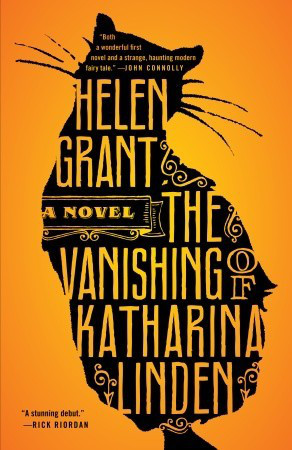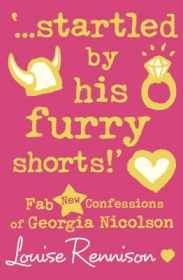Halloween may be behind us, but that’s not to say that the scary fun is over.
I (Kristina) was one of those children who just loved being scared. It started with a book called The Finger Eater by Dick King-Smith. A book that had such an impact on my brother that he shoved blankets and clothes down the side of his bed so the Finger Eater wouldn’t gobble up his pinkies in the night. Then I moved on to some Robin Jarvis, Goosebumps, and later Cliff McNish’s Doomspell series and the classic (and fantastic!) Point Horror series – highlights include Twins and The Babysitter, thanks R.L. Stine.
Now, for a good spooking, I read Stephen King and Shirley Jackson, but it’s the childhood scares that stay with me the longest. They’re the stories I can recall most vividly. We’ve had a number of conversations about Point Horror in the office and EVERYONE interrupts each other with, “Do you remember the one…” It’s something special.
Today we have an author who knows a thing or two about scaring kids, Helen Grant. Her outstanding YA novel The Vanishing of Katharina Linden left me utterly chilled – read it if you haven’t yet. We asked Helen all about how she gets her inspiration and what she thinks makes a great scary novel.

What are the three key building blocks when writing a scary novel?
One of the most important things is to remember that a scary novel is meant to be SCARY, not so gory that it’s horrifying. For me, the pleasure of reading a scary book is that spine tingling feeling.
Secondly, I think creating relatable characters is really important. If the reader doesn’t empathise with the hero or heroine, they won’t feel the same sense of tension about what happens to them.
It’s also key to have a really strong plot with lots of thrilling scenes. In a short ghost story, you can build up to one single terrifying event. In a full length novel, you have to maintain that tension for a lot longer, so you have to include lots of scary moments as you go along.
Where do you draw inspiration from?
I love to visit scary and atmospheric places, and many of them end up featuring in my books and short stories. Places I have visited in the past include ruined castles and churches, catacombs, a deserted railway tunnel and the Brussels sewers!
I also love folklore and legends, and some of these have definitely inspired my work. My first book, The Vanishing of Katharina Linden, includes local German folktales retold in my own words.

How do you avoid clichés and write with real menace and tension?
That’s one of the biggest challenges, I think. If you are reworking folk tales or creating a plot about some horrible secret buried in the past, obviously you are going to be covering old ground to some extent. There are also certain expectations of a creepy story. My teenage daughter says she reads ghost stories especially for the clichés!!
I think there are several things the writer can do. It’s useful to read the same kind of thing you are trying to write. I love thrillers and ghost stories so I read loads of them. This means that you become familiar with what has already been done many times. A ghost haunting a deserted house is pretty old; if you can think of a really unusual reason for the haunting, it becomes a lot more intriguing.
I think the other thing is that the details of the story should really bring the characters and setting to life. If you can share the character’s terror and absorb all the striking details of a scene, it makes it so much more vivid.
What is the scariest book/story you have read?
Hmmm, that’s a very tough question. When I was a child, I think the book that scared me more than any other was – oddly – a Victorian anthology called The Silver Fairy Book. It always astonishes me, the things people thought were suitable for kids in the past! There are various grotesque stories in it, but the one that stands out is The Palace of Vanity, translated from the French. It’s about a place where everyone’s wishes come true, but in horrible ways. For example there is a woman who wishes for a “wasp waist” and becomes so thin that she cannot stand up any more for fear of snapping. It’s horrible! Brrrr.
As an adult, I found Cormac McCarthy’s book The Road, about a father trying to protect his son in a post-apocalyptic landscape, so unbearably tense that I have only ever read it once. It’s still on my bookshelf, but I can’t bear to open it again.
If I want a pleasurable scare, though, I read the ghost stories of M.R.James. Some of those give me the creeps so badly that my eyes water!
Is there a big difference between writing to scare children and adults? Obviously less gory but what else?
I think there are lines I wouldn’t cross when writing for young people.
As well as my young adult novels, I write short ghost stories for adults, and in some of those, the ending can be quite grim. Well, okay, in practically all of them, the ending is very grim…
In my young adult novels, people do die, and horrible things do happen, but I can’t imagine writing one in which every good character died at the end and the villain got away scot free. I like a sense of justice to prevail at the end. I also like to show my hero or heroine actively battling to bring about that justice – taking control. In some of my adult stories, there is a sense that the protagonist is being carried along by events, or that their own failings (greed, naivety, selfishness) lead to their downfall. My young adult protagonists are more sympathetic characters than that, and they also try to take control of the situation. Lin, the heroine of The Glass Demon, is pretty much the only proper adult in her family, even though she’s only seventeen.
Follow Helen Grant on Twitter: @helengrantsays
Advertisements Share this:




